Movie that explains "Deep Learning" and "Neural Network" as easily and clearly as possible
A movie that makes it easy and easy to understand what is operating about the words "neural network" and "deep learning" which frequently appear on topics related to artificial intelligence (AI)How Does Deep Learning Work?"Is published on YouTube.
How Does Deep Learning Work? | Two Minute Papers # 24 - YouTube
The neural network is a reproduction of the loose model of the human brain by computer programming. In other words, it may be said that we were inspired by the human brain's work in human brains.

I will explain the neural network with an example of image recognition task and 2 dimensional graph. First, let's see the curves on the plane below. This curve is a set of points, please regard this point as image, sound, or other input data.

There are two curves, red and blue, but if you think that they represent different classifications OK. This time we will call red for "train" and blue for "rabbit".
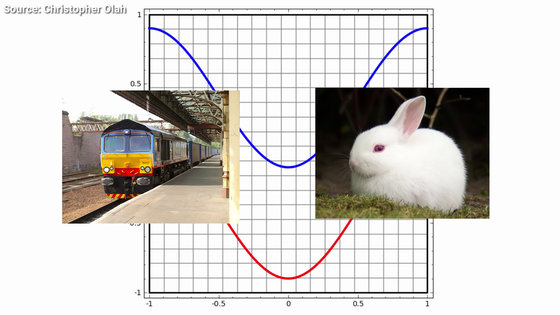
The curve is basically a collection of images such as trains and rabbits and trains the network using these limited data. Then, a new point on the plane, that is, a new image appears. It is the task of the algorithm to judge whether this new image is a train image or a rabbit image.
A simple and poor solution to this problem called "classification problem" is to divide the plane into halves by lines. The point belonging to the red region is classified as an image of the train, the point belonging to the region of the blue color is classified as the image of the rabbit.

However, as you can see from the image below, even a blue line drawn from the beginning has infiltrated a little into the red area. This means that images of some rabbits are misclassified as train images.
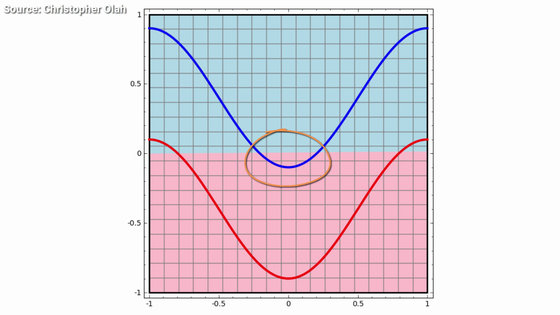
It may be hard to distinguish whether a misclassified image is a rabbit or a train.
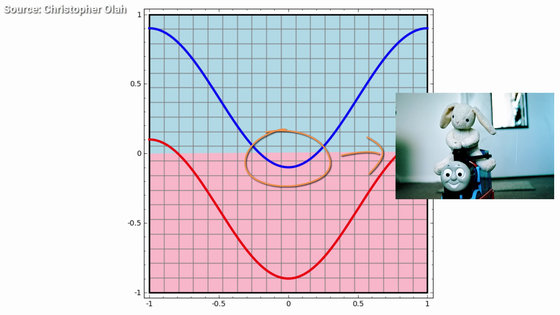
It seems that it is impossible to classify two images with only one line, but it seems that the same result will be obtained when trying to classify images using only a simple neural network.
So how about using a curve like this to decide two boundaries?
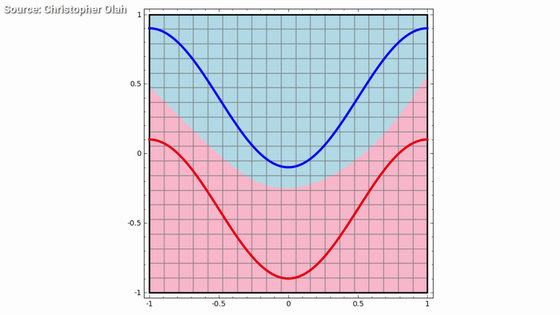
Alternatively, you can classify with a single line by deforming the plane with an algorithm. If this deformation goes well, the two classifications will be more accurate.

Furthermore, it seems to be difficult to classify with a single line, for example, in the case of entangled helical lines like the following.
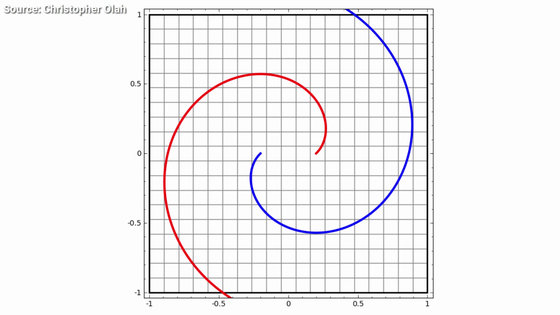
However, if the plane is correctly distorted, it can be easily classified by one line.
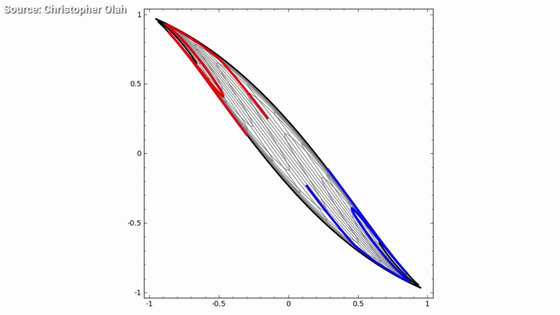
There are several rules for this method. For example, it is impossible to remove one of the helical lines and place it elsewhere. These variants must be phase translations. The fact that it is a phase conversion means that it does not split the important structure and it means that even if the transformed solution returns to its original shape, it becomes meaningful.
I have briefly explained about the neural network so far, but commentary on deep learning started from here. Deep learning is what makes a neural network have multiple hidden layers and it becomes possible to more effectively create internal representation of data.
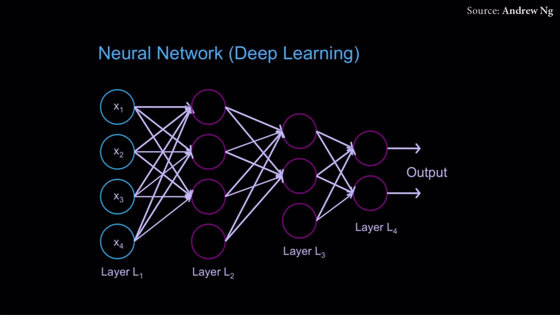
In the case of the image recognition task that appeared in the analogy of a neural network, the edge detector is displayed by overlapping layers, an object part is generated as a combination of edges, and an object is created by combining the subsequent layer object parts The model is created.
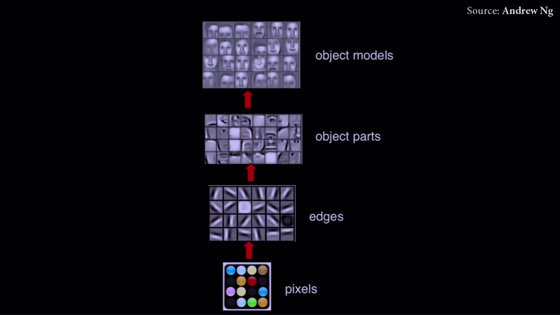
When there are circles of different classifications in circles as follows.

Even if the neural network distorts the plane to separate it with one line, it is difficult to classify it clearly with one line.
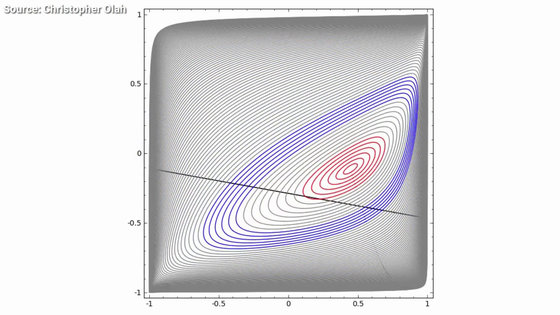
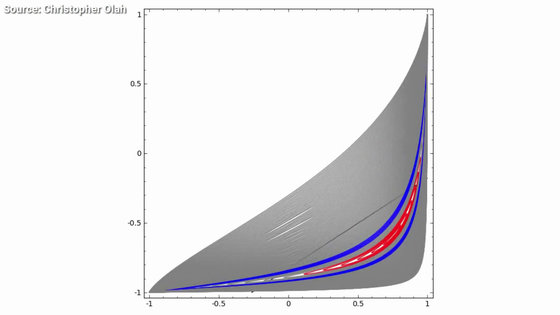
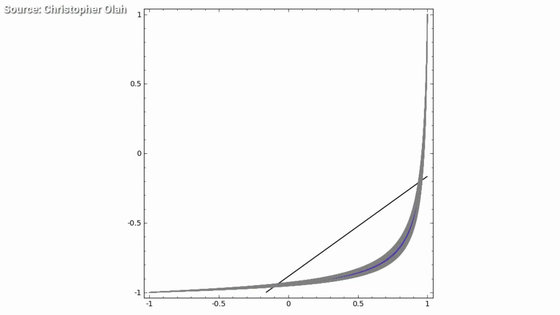
Trying to classify this with a single line, intuitively, if you push the red part with your finger, you can segregate the red and blue regions with a single line.
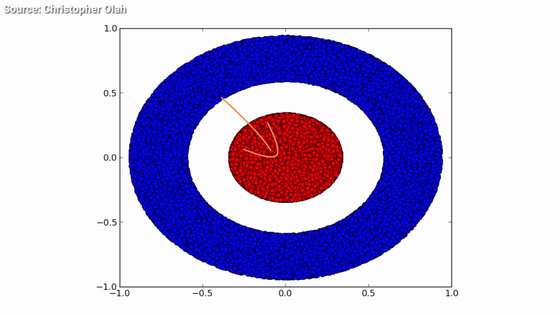
You can see that classification is possible by looking at three-dimensional mapping.
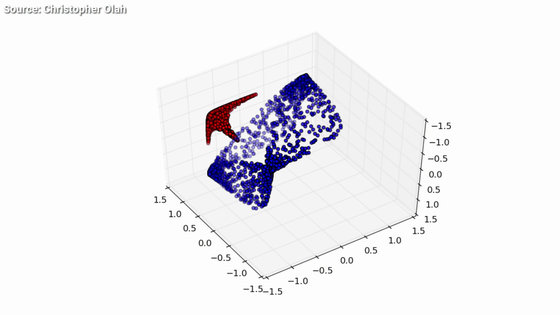
Looking at this in two dimensions like this. You can see that one line can distinguish red and blue areas. If such conversion can be carried out freely, it is easy to classify things that seemingly difficult to classify.
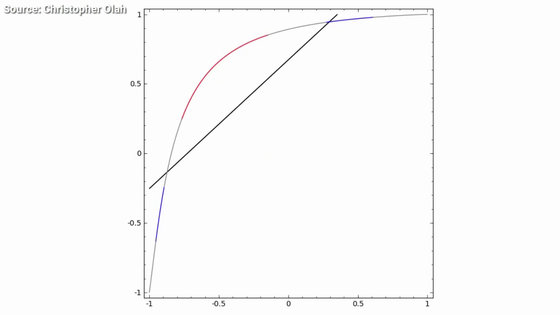
There are also cases where the data is complicatedly intertwined and it is not known which is the best solution.
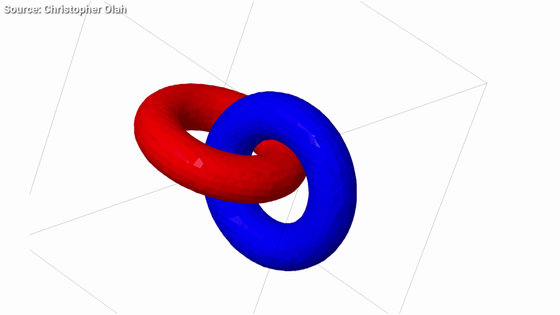
In such cases it will helpKnot theorySo this is the study about things that intertwine and unravel. Knot theory helps to study this sort of problem and eventually it may be useful to recognize traffic signs and also to design automatic driving cars.
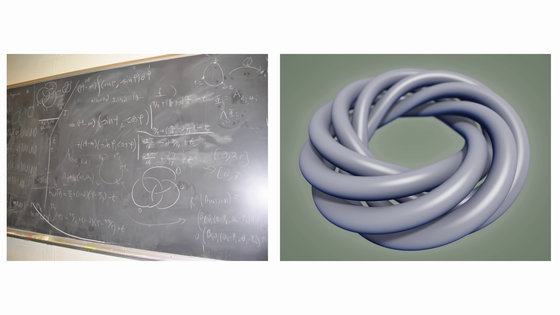
If the number of neurons is small and there is only one layer, complicated classification does not work, but ...
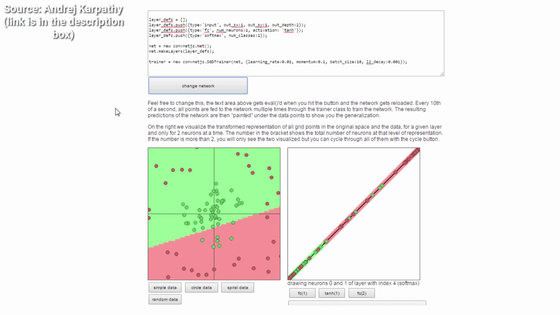
Increasing neurons and layers makes complex classifications easy. This is the difference between neural network and deep learning.
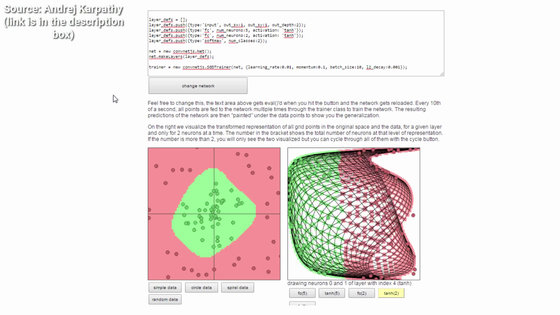
Related Posts:








